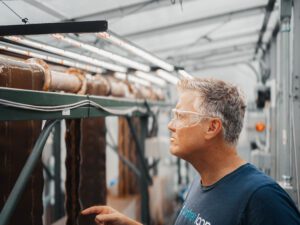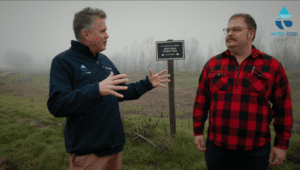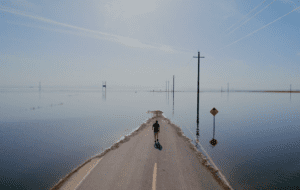Shining a Light on Water Solutions: A Conversation with Travis Loop of waterloop
 Tell us about waterloop and why you started the organization.
Tell us about waterloop and why you started the organization.
I was tired of only hearing the doom and gloom about water. The news and social media are always dominated by the latest crisis, the newest disaster, the next sky-is-falling moment. But what about the people who are solving these challenges? What about the innovations and ideas that are working? That’s what I wanted to amplify. So I launched waterloop — a nonprofit news outlet exploring solutions. We focus on the people, policies, and projects advancing sustainability and equity in water. It’s a blend of podcasting, filmmaking, and social media storytelling, built on my background as a journalist and communicator. Follow waterloop
Many people may know about your waterloop podcast, but what else do you do?
A lot of folks know about the waterloop podcast. They might listen on Apple or Spotify — but don’t realize there’s a video version of every conversation. And honestly, the podcast is just one part of what I do now. The most exciting element over the past few years has been traveling across the U.S. — probably 50 trips and counting — capturing stories in the field. That includes standing on farms in Iowa, walking through restored floodplains along the Mississippi River, visiting rural communities in California’s Central Valley, and filming inside massive treatment plants, such as a $2 billion infrastructure investment in Houston. That hands-on, place-based storytelling is at the heart of waterloop today. What’s been especially fun is that short videos from these trips — often 60 seconds long — have done really well on TikTok, helping water stories reach the general public far beyond the water world.
How do you decide on the projects or organizations to feature on the podcast?
As a nonprofit news outlet, a great deal of my content is focused on, honestly, where I can garner funding from foundations or organizations to cover issues or places. I do retain editorial independence and cover these stories from a solutions journalism perspective, but I have to work with — and find — funding sources to support the issues and locations I visit. As a news outlet, this often involves companies basically being advertisers, where visibility with the waterloop audience is highly valuable for them.
How do you prepare guests for the interview?

Most of the time there will be a preliminary call or meeting with a guest where I will, as reporters do, learn more about them, their story, their exact expertise — and especially about the solution they’re involved in. I really want to talk about and see specific examples as much as possible. I use that meeting to develop the storyline and questions and provide those to the guest so they have a sense of where the episode is headed. Then when we sit down, I bring genuine curiosity about what they do and admiration for the impact they’re making. I try to keep the conversation comfortable, authentic, and relaxed.
 Tell us about an interview or recording that didn’t go as planned — or a funny anecdote from visiting a location.
Tell us about an interview or recording that didn’t go as planned — or a funny anecdote from visiting a location.
Not everything goes as planned. In South Florida, we had iguanas crash our location while we were filming. Another time, my filmmaker and I lost a drone to strong coastal winds by Monterey Bay and had to trudge through a wetland to find it. In Tucson, filming in the Santa Cruz River where reclaimed water was being put back in, we sank ankle-deep into riverbed muck while chasing the shot. Also, it seems like everywhere we go, there’s a conspiracy to have leaf blowers and lawnmowers fire up the second we’re about to hit record on an interview.
What’s a goal you have for waterloop over the next five years?
My goal has always been steady growth — and to stay true to the mission. That means remaining authentic, bringing it back to solutions journalism, keeping a spotlight on what’s working, and not getting distracted by the constant noise of disaster or negativity. I want to continue showing people what water progress looks like all around the country and giving them a window into the projects and people making a difference.
